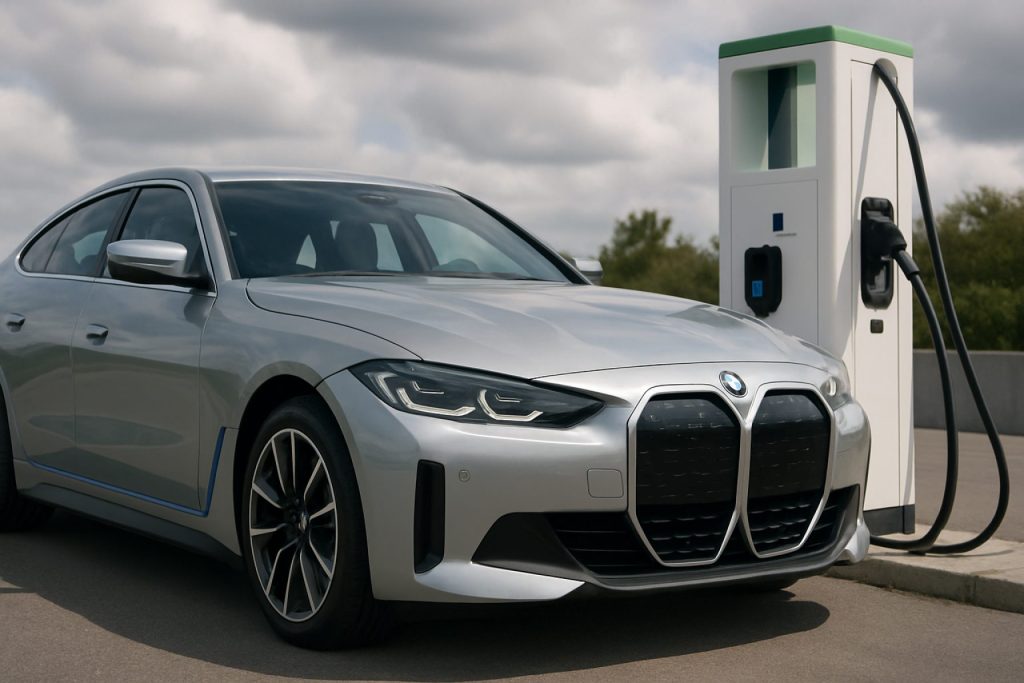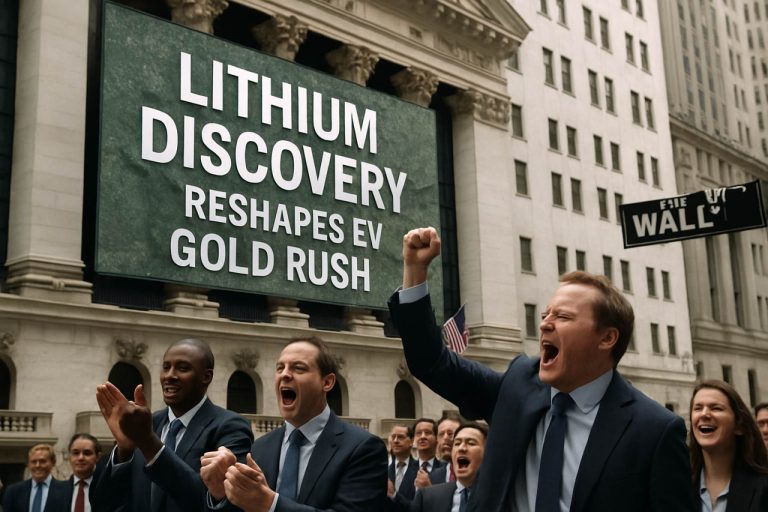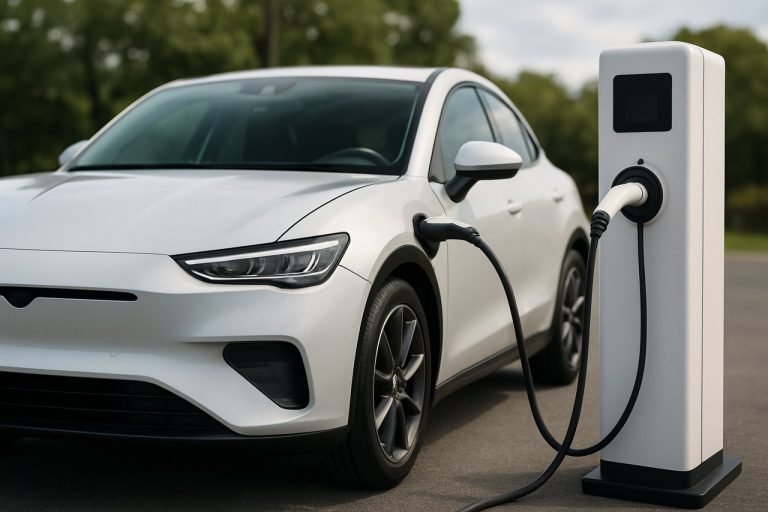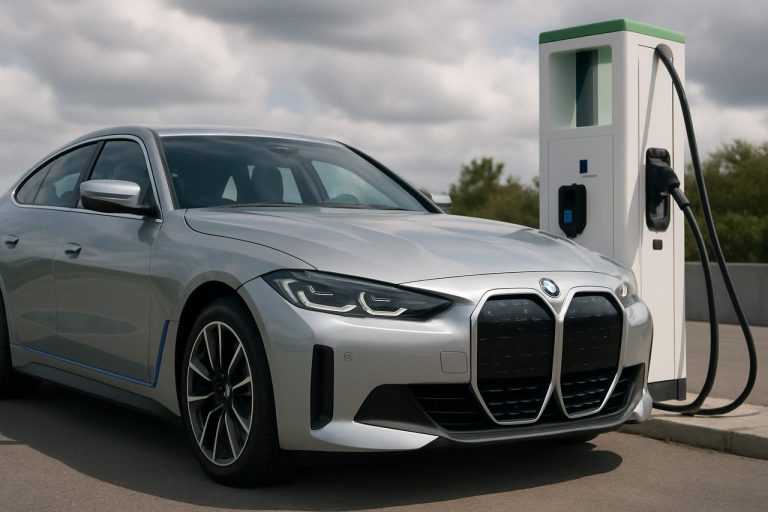
- BMW has produced its three-millionth electric vehicle, marking a significant milestone in automotive electrification and innovation.
- Electric and plug-in hybrid models now account for over 25% of BMW’s global sales, with fully electric vehicles representing the majority of that share.
- BMW’s plants now integrate electric and traditional vehicles on the same assembly lines, reflecting a major shift in manufacturing and design philosophy.
- The brand’s transformation is seen as a key indicator of the auto industry’s wider move towards sustainable, emission-free driving.
- Consumer choices are vital, influencing how rapidly the adoption of electric vehicles will expand in the coming years.
BMW’s sprawling Munich plant roared to life this week with the birth of its three-millionth electric vehicle—a gleaming BMW 330e Touring destined for Britain’s fast-changing roads. The atmosphere inside the factory was anything but routine: every robotic arm, every technician’s glance, pulsed with the energy of a new era. This isn’t just an industrial achievement. It’s a symbol of a revolution accelerating beyond Germany’s autobahns and rewriting the story of modern mobility.
Walk through BMW’s factories today and you’ll see a remarkable ballet: vehicles powered by electric drivetrains and traditional combustion engines glide down the same assembly lines, side by side. Such seamless integration did not exist a decade ago. Before 2013, BMW’s innovations were siloed—the futuristic i3 rolled off a dedicated line in Leipzig, a pioneer sporting a custom-made architecture that had no place beside gasoline engines. The city compact, along with the breathtaking i8 plug-in hybrid coupe, carried the torch for an experiment: could Germans reimagine their driving soul for a battery-powered world?
Fast-forward to today, and the answer rings clear. Electric cars and plug-in hybrids now form over 25% of BMW’s global sales, with three-quarters of that share commanded by purely electric models. Park a new MINI, a BMW SUV, or a Rolls-Royce Spectre in your driveway, and you join more than 1.5 million customers who have embraced emission-free motoring. This shift is not happening quietly. Industry leaders and environmental advocates alike name BMW’s rapid transformation as a bellwether for where the old order is headed: a future in which electrification is the default, not the exception.
Such momentum isn’t just about numbers. It’s about BMW’s answer to a global challenge: delivering cars that are innovative, sustainable, and irresistibly fun to drive. Munich’s achievement—a plant where 330e plug-in hybrids share space with conventionally powered vehicles—spotlights new manufacturing philosophies demanded by a world cautiously optimistic about green technology. The lines between what’s “normal” and what’s “next” are fading.
Consumers stand at a crossroads, their choices more consequential than ever. Will the next three million electric BMWs arrive even faster? The answer depends on drivers worldwide—on their willingness to accelerate change, one quiet, powerful engine at a time.
For those looking to stay tuned to the wave of innovation and electrification in the automotive realm, keep an eye on official manufacturers like BMW as the landscape continues to evolve. The road ahead promises surprises for the industry and unforgettable experiences for those behind the wheel.
BMW’s 3-Millionth Electric Vehicle: What It Means for the Future of Cars, Industry, and Your Wallet
BMW just built its 3-millionth electric vehicle—a milestone that signals the dawn of the electrified automotive era. But what does this mean for drivers, the industry, and the environment? Here are deeper insights, critical facts, and actionable tips based on the latest BMW achievement.
—
Expanded Insights Not Fully Covered in the Original Article
1. BMW’s Electrified Growth Outpaces Global Rivals
– Market Position: As of early 2024, BMW is one of the top three global premium automakers in terms of electric vehicle (EV) sales, trailing only Tesla and Mercedes-Benz. According to EV-Volumes, BMW sold over 375,000 all-electric vehicles in 2023 alone—a 74% increase year-over-year.
– EV Share Target: BMW aims for EVs to reach 50% of its global sales by 2030, committing tens of billions of euros to R&D and battery technology development.
– Comparison: In contrast, Volkswagen Group delivered about 771,000 EVs in 2023 across all its brands, but with a broader vehicle portfolio and more mainstream models.
2. How BMW’s Flexible Manufacturing Works
– Single Assembly Line: BMW’s “Flexible Assembly” strategy allows production of electric, hybrid, and traditional vehicles on the same line. This minimizes investment risk and adapts rapidly to changing demand.
– Life Hack: Expect shorter wait times for popular electric models due to this adaptable manufacturing—especially during periods of high EV demand.
3. Sustainability & Lifecycle Impacts
– Green Energy: BMW’s Munich plant uses 100% renewable energy, including energy from hydroelectric and solar sources.
– Closed-Loop Recycling: The company has implemented closed-loop material cycles for aluminum and batteries, reducing emissions by up to 70% for certain components.
– Battery Recycling: BMW partners with Northvolt and CATL for battery recycling and second-life applications, ensuring spent batteries do not become environmental hazards ([IEA report](https://www.iea.org)).
4. Real-World Use Cases
– Plug-in Hybrids (PHEVs): Vehicles like the BMW 330e allow for an all-electric commute (up to 50-60 km per charge) with gasoline backup for long-distance trips—ideal for drivers in regions with underdeveloped charging infrastructure.
– All-Electric Models: BMW’s i4 and iX3 are increasingly popular among fleet operators and urban commuters thanks to low running costs and reduced city congestion charges.
5. Specs & Pricing Overview
– Example: BMW 330e Touring
– All-electric range: 34–41 miles (WLTP)
– Combined power output: 288 hp (215 kW)
– 0-60 mph: ~5.7 seconds
– Base price (UK): From £43,000 (as of 2024)
– New i5 (2024 model):
– All-electric range: Up to 361 miles (WLTP)
– Base price (EU): From €70,000
6. Security & Sustainability
– Digital Key: BMW offers “Digital Key Plus,” allowing you to use your smartphone as a key, with ultra-wideband security protocols.
– Environmental Initiatives: BMW’s “Neue Klasse” platform (debuting from 2025) will use more recycled materials, further reducing the carbon footprint.
7. Pressing Questions Answered
Q: How does BMW’s EV reliability stack up?
A: Reliability studies from J.D. Power and Consumer Reports (2023) rank BMW’s EVs above average, though recalls (such as for i4 battery packs) are reminders that the technology is still maturing.
Q: What about charging infrastructure?
A: In Europe and North America, BMW partners with IONITY, Electrify America, and Shell Recharge—offering easy access to high-speed charging. BMW vehicles support up to 200kW DC fast charging, enabling 10-80% recharge in as little as 30 minutes.
Q: Are there limitations to owning a PHEV or EV BMW?
A: Upfront costs remain higher, federal/state subsidies are decreasing, and home charging installation can require extra investment. Battery range may decrease slightly after ~8 years, but most modern packs exceed 150,000 miles in expected life.
8. Market Forecasts & Industry Trends
– Trend: BloombergNEF forecasts that by 2030, 40-50% of new cars sold in Europe and China will be fully electric, making BMW’s production strategy crucial for competitiveness.
– Incentives: Many countries (UK, Germany, Norway) are ending fossil-fuel vehicle sales from 2030-2035, ensuring demand for BMW’s electrified lineup will grow.
9. Pros & Cons Overview
| PROS | CONS |
|———————-|————————|
| Lower running costs | Purchase price premium |
| Tax & emission-free | Charging infrastructure varies |
| Quiet, smooth drive | Range still less than ICE |
| High resale value | Battery replacement costly |
—
Actionable Recommendations & Quick Tips
1. Considering an EV or PHEV BMW?
– Test drive both: Compare range, comfort, and ease of charging.
– Check charging at home: Install a Level 2 charger if you can; it makes ownership vastly easier.
– Use incentives: Apply for any remaining federal or state EV credits and local utility rebates.
– Plan for upgrades: BMW regularly updates vehicle software OTA—keep your car updated for peak efficiency.
– Stay informed: Bookmark BMW for official updates on new models, battery tech, and sustainability programs.
Final Thought
The 3-millionth electric BMW isn’t just a milestone—it’s a signpost on the road to the industry’s electrified future. Smart shoppers who navigate this shift stand to save money, reduce emissions, and enjoy new driving experiences. Whether you’re eyeing a hybrid for city commutes or an all-electric car for emission-free journeys, the electrification revolution is accelerating—now is the time to plug in and get moving!



